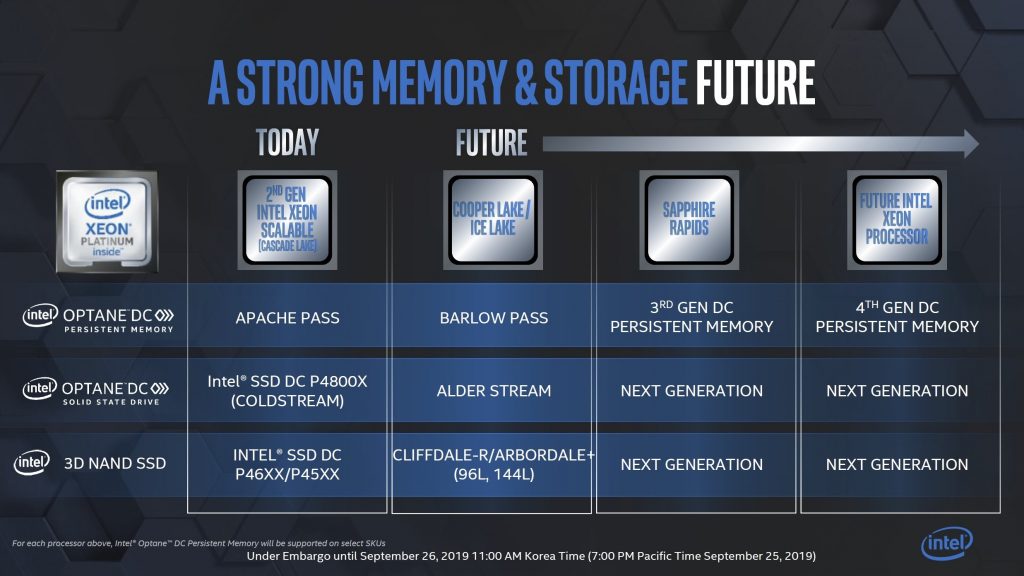This week in Seoul, South Korea, Intel held somewhat of an unusual event. Right smack dab in the middle of Samsung’s turf, Intel took the time to make some very key announcements in the storage industry by demonstrating ‘proof of concept’ and future releases to a very limited group of global media. For those having been involved with Intel for any period of time, getting Intel to speak on future product has traditionally been like pulling teeth. Historically, anyone within the company speaking on product development or future releases might find themselves advertising for a new job. Websites leaking Intel roadmaps experienced much the same and typically found themselves outside of Intel’s ‘circle of trust’ in future announcements. As we learned this week, this is a new Intel with new direction.
THE INTEL ROADMAP
Cooper Lake and Ice Lake are key to Intel’s future. Not only do we see Intel’s DC Persistent Memory Module having complete integration here, but also, we learn of the next generation Optane SSD code named ‘Alderstream’. As well, we see Intel’s 96-layer memory entering the marketplace in 2019 with the road being paved for 144-layer only a year later.
INTEL OPTANE PERSISTENT MEMORY MODULES (DCPMM)
An Intel Optane DC Persistent memory Module will fit into a regular DDR4 memory slot. The DCPMM is both memory and storage. Unlike DRAM today, which loses all data when power is removed, these modules retain everything.
They will be available in 128, 256, and 512GB and they will cost your left arm initially. They are destined for enterprise but Intel’s vision sees client and consumer applications and Intel made it very clear that the form factor would have to change. This PC has an Apache Pass prototype running behind that cooling fan to the left of the CPU:
So what does that mean to us? Well, this could create just about the same disruption in the storage industry as we saw moving from HDD to SSD. This would start the evolution of ‘instant on’ and never having to save anything because all the work and applications you have right there on your desktop are right there when you turn the computer back on…instantly. I never would have believed it but they demonstrated this first hand. As quick as an SSD is, persistent memory will change our world once again. It is really going to be that much of a game changer, especially when we can move it down to the client and consumer level.
It isn’t really that unusual that we might see 3.6GB/s read and 1.8GB/s write speeds these days but look at that random 4k throughput and IOPS read and write in QD1. This is unheard of by any stretch of the imagination and this is only a demo…an early prototype in what really is a desktop system. Here is a quick look at DCPMM specs:
But wait…. Imagine this in a client or consumer PC. It is in the works although Intel believes it will have to be introduced as a new form factor.
Next up… The Intel ‘Alderstream’ Optane SSD.
 The SSD Review The Worlds Dedicated SSD Education and Review Resource |
The SSD Review The Worlds Dedicated SSD Education and Review Resource | 


Les, you reviewed a similar product from another company about a year or so ago. Never heard anything after that about the company or product in the tech rags. Is this concept just a solution in search of a problem?